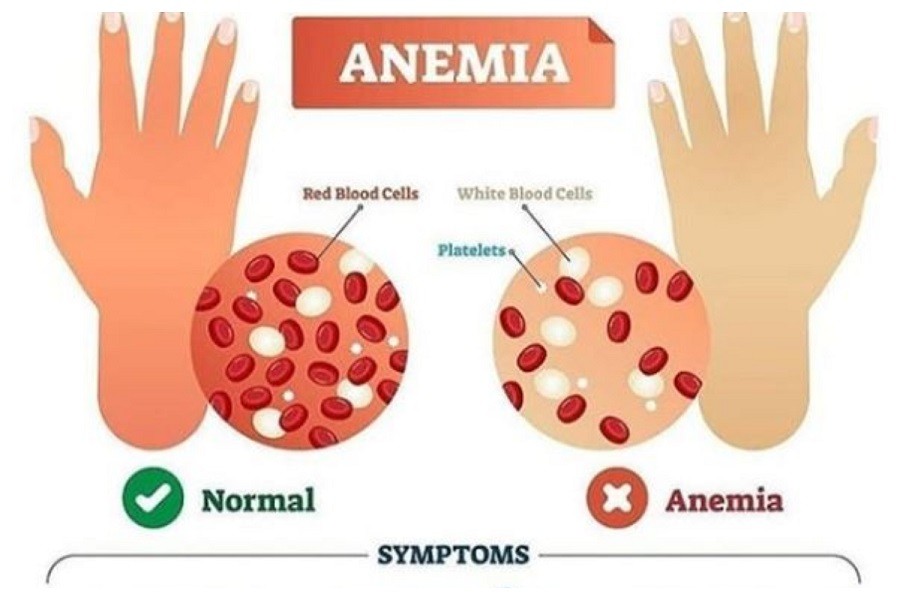Anaemia is a common condition affecting our red blood cells (RBCs). The main function of our RBCs is to carry oxygen from the lungs to body tissue and carbon dioxide in the opposite direction.
This requires a special protein called haemoglobin (Hb) in the RBC, which conjugates with the oxygen for transportation.
A normal Hb concentration is needed for us to properly conduct this whole process, and this level of Hb will vary by age, sex and sometimes even geography or elevation as well.
Anaemia sets in when either the absolute number of RBC or Hb concentration falls below normal, or when the RBC or Hb are dysfunctional. This hampers the oxygen and carbon dioxide transportation, affecting the human body’s capacity for gas exchange.
WHO considers anaemia as a global public health issue. British medical journal the Lancet in a 2015 article suggested that almost one third of the globe’s population may have some type of anaemia.
Pregnant women and young children are the two most vulnerable groups. WHO estimates revealed that worldwide, 42 per cent of under 5 children and 40 per cent of pregnant girls are anaemic.
Our tissues and organs need oxygen to survive and function. In anaemia, this supply of oxygen is disrupted, resulting in various symptoms. The most common one is weakness and fatigue.
These patients almost always feel tired. Sometimes they fall when they try to get up from a sitting position. Other common features include breathlessness, dizziness, irregular heartbeat, pale skin, coldness in the hands or feet, etc.
Anaemia itself is not a disease, rather like fever it is a manifestation of some underlying problem. This could range form a simple nutritional deficiency, e.g. iron, folic acid, vitamin A, vitamin B12.
Infectious diseases like malaria, TB, HIV, parasitic infestation all could lead to anaemia. Sometimes it is due to hereditary conditions, cancer, liver or kidney disease, rheumatoid arthritis or other chronic conditions.
The most common causes of anaemia include nutritional deficiencies, particularly iron deficiency, though deficiencies in folate, vitamins B12 and A are also important causes; haemoglobinopathies, and infectious diseases, such as malaria, tuberculosis, HIV and parasitic infections.
Certain groups are at high risk, especially pregnant and menstruating women. People suffering from chronic diseases, or taking long term NSAIDs (e.g. ibuprofen) are also at risk.
Being born prematurely, diet lacking in necessary vitamins and minerals, family history of inherited anaemias all add to the risk
How do we treat it? It depends on what is causing it. If it is due to nutritional deficiency, the physician will try to identify the reason for it and then treat that.
In the meantime, the patient will be advised to eat nutrient rich food and take additional supplements, if necessary.
For iron deficiency, the patients may be asked to eat more green leafy vegetables, pulses, beans, brown rice, red or white meats, eggs, etc.
For chronic disease, unless the disease is managed, anaemia is difficult to address. These patients may need medications, sometimes bone marrow transplant may be suggested.
To reduce the risk of nutritional deficiency anaemia, we should practice eating a healthy, balanced diet.
Food items like fresh fruits, vegetables, dairy, meat should constitute a reasonable amount.
Sometimes a daily dose of multivitamin tablet is good. However, for older adults, supplements like iron or folic acid should always be taken only after discussion with a physician.


